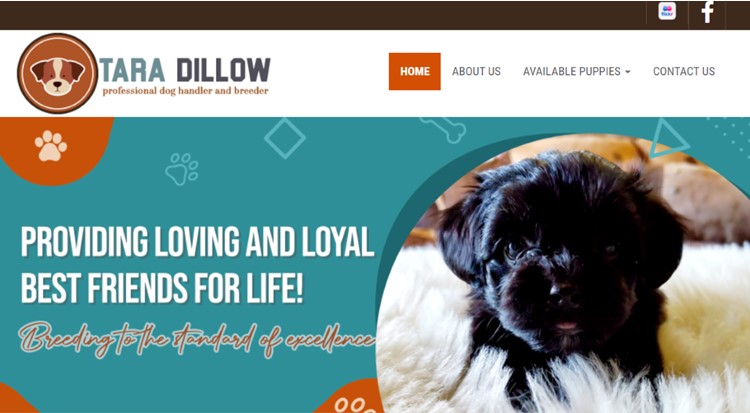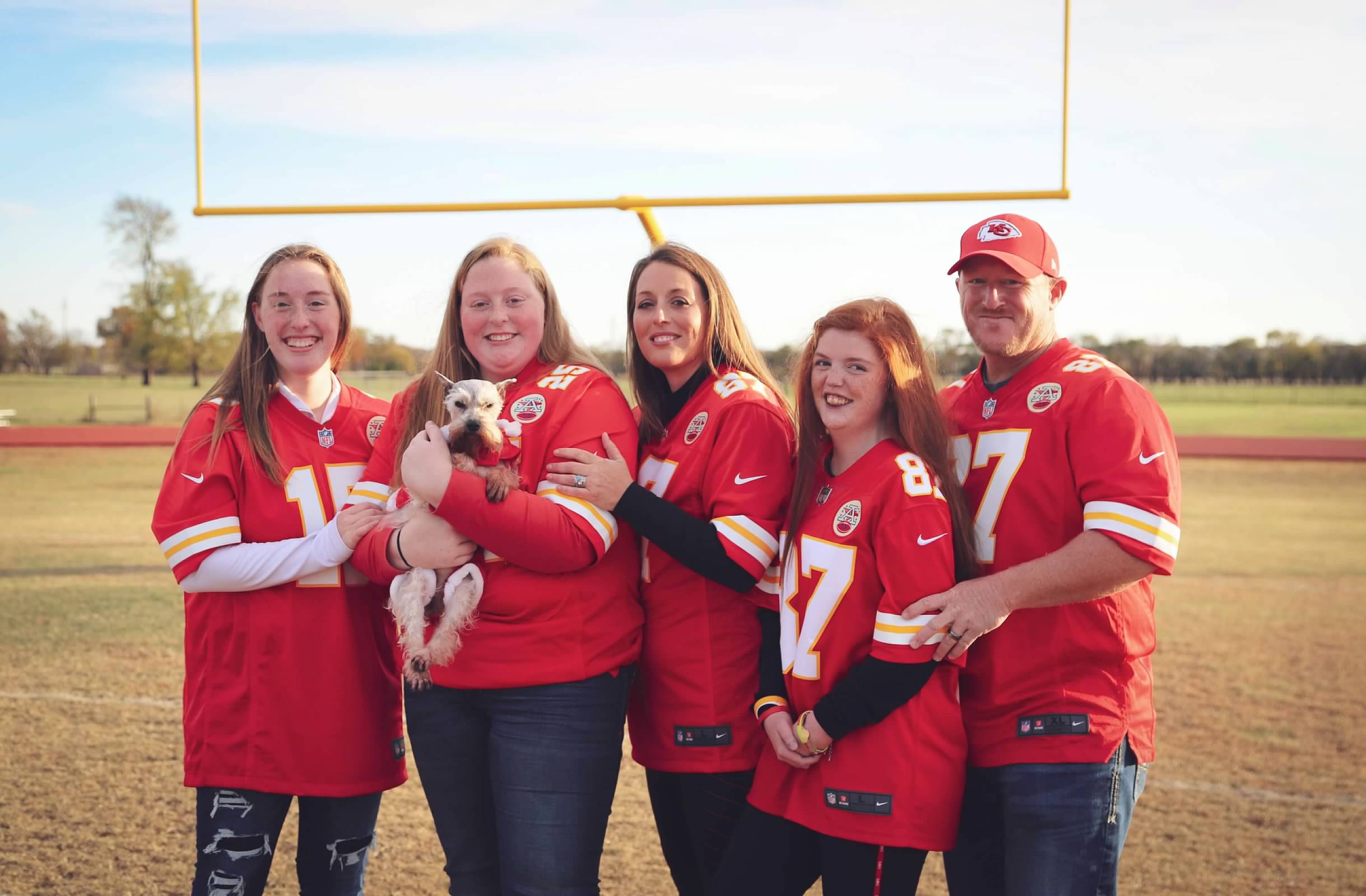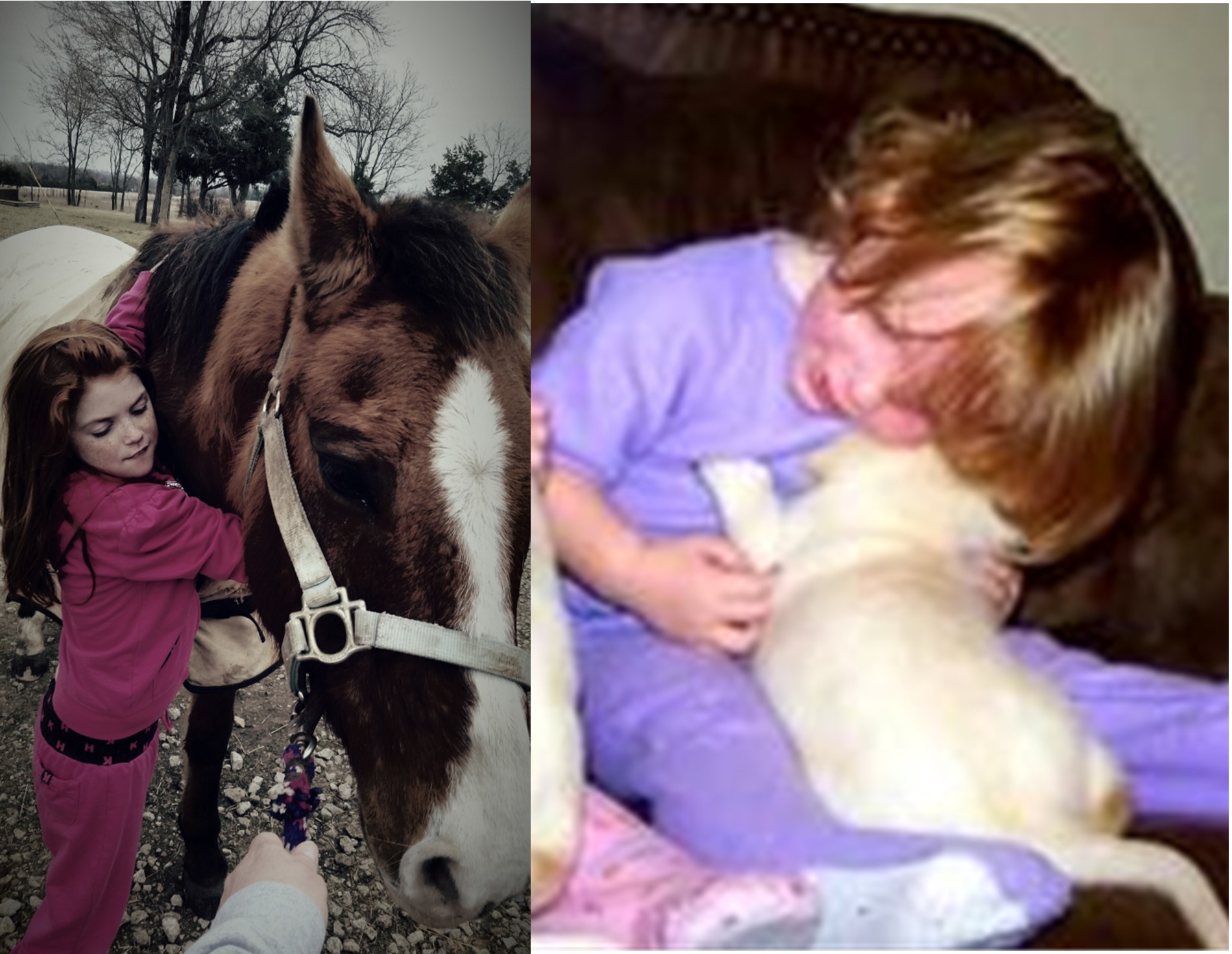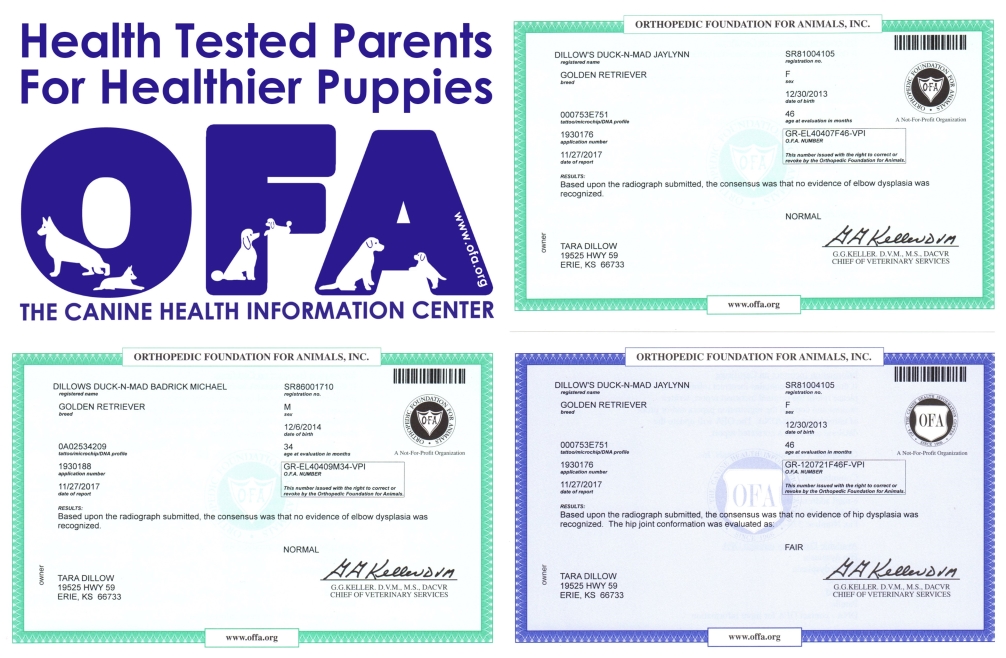




Tara Dillow Professional Dog Breeder of Erie, Kansas




Tara Dillow conducts extensive veterinary certifications on the mothers and fathers of puppies. Tara Dillow’s veterinarians oversee all aspects of both the genetic physical health and daily socialization programs he has in place at his state-
Tara Dillow’s family-
What is Hi[ Dysplasia in Dogs?
Hip dysplasia is a specific deformity of the hip joint. The hip is a ball and socket joint, and to form properly, both the head of the femur (ball) and the acetabulum (pelvic socket) need to grow in sync.
Hip dysplasia occurs when there is no uniform growth – the ball and socket develop at different rates causing joint laxity or looseness. As the condition progresses, the dog‘s hip joint loses its full range of motion, resulting in lameness. This lameness is due to loss of cartilage, an increase in scar tissue and small bone fragments around the joint.
As an orthopedic condition, hip dysplasia is not life-
Normal Canine Hip Anatomy
The normal hip consists of a perfectly fitting femoral head and pelvic socket. The head of the femur is spherical and well-
Dysplastic Canine Hip Anatomy
In a dysplastic hip, either the head of the femur is not spherical and smooth, or the pelvic socket is not deep enough. Either way, the result is the same – a loose or partial fit between the two bone surfaces.
Over time, the misshapen hip joint develops osteoarthritic changes. Once osteoarthritis sets in, the problem becomes self-
What Causes Hip Dysplasia in Dogs?
The causes of hip dysplasia can be classified into two major groups:
Hereditary: In general, hip dysplasia is a congenital or hereditary condition. The inconsistent growth rate of the hip joint starts before birth, and then it is accented by certain factors like growth rate, diet, exercise, muscle mass, environment, and hormones.
Degeneration: Hip dysplasia can also develop due to degenerative changes occurring in the joint. Degenerative joint disease is a common issue in seniors. The degeneration may occur in young dogs due to overstressed hip joints (for example, CCL tearing).
What Breeds are Prone to Hip Dysplasia?
Large breed dogs and giant breed dogs are prone to hip dysplasia. Typical aggravating factors include excessive growth rate, rapid weight gain, and improper physical activity.
Here is a list of the dog breeds with a predisposition to hip dysplasia:
Golden Retrievers
Labrador Retrievers
German Shepherds
Rottweilers
Saint Bernards
Great Danes
Old English Sheepdogs
Large and giant mixed dogs.
However, hip dysplasia is not limited to large and giant breed dogs. Small canines like Pugs and Bulldogs are also prone to hip joint incongruencies.
If planning to acquire a dog breed predisposed to hip dysplasia, be sure to find a reputable dog breeder. Reputable breeders have both parents tested and certified prior to enrollment into breeding programs.
What are the First Signs of Hip Dysplasia in Dogs?
Weakness, pain, and lameness (limping) in the hind legs are the first signs of hip dysplasia in dogs. The telltale sign of hip dysplasia is the so-
Here is a more detailed list of the clinical signs of hip dysplasia in dogs:
Chronic or occasional hind leg limping
Reluctance to climb up and down stairs
Inability to get up and sit down
Difficulty getting in and out of the car
Disinterest in physical activities
Muscle atrophy in the affected leg
Pronounced protectiveness of the hip
Pain-
In theory, puppies can start showing signs of hip dysplasia when as young as five months of age. However, in practice, the clinical manifestation starts later on, when around one or two years of age.
How is Hip Dysplasia Diagnosed in Dogs?
The golden standard for diagnosing hip dysplasia in dogs is radiographs – x-
There are several hip dysplasia scoring systems based on reputable bodies. Let’s review the most frequently used standardized systems.
Orthopedic Foundation for Animals (OFA). After taking hip radiographs, the images can be sent to OFA for certification. OFA uses a seven-
PennHIP. The PennHIP grading is based on three x-
British Veterinary Association (BVA). BVA grades the dog’s hip joints based on nine aspects. Each hip is given a score, and then the two are added to get the general hip score. The overall hip score can be between zero and 106 – zero to 53 per hip. Zero stands for no dysplasia, and 53 stands for maximum dysplasia.
Other Conditions With Similar Symptoms
Sometimes the clinical signs and symptoms are enough for the veterinarian to suspect hip dysplasia. However, since other conditions with similar manifestations exist, the veterinarian will perform a complete examination.
The following are potential differential diagnoses:
Osteoarthritis or degenerative joint disease of the hip joint
Problems with the knees (torn CCL or luxating patella)
Cauda equina syndrome (lower spinal cord compression).
What are the Treatment Options for Hip Dysplasia in Dogs?
The treatment for hip dysplasia in dogs can be non-
In general, both approaches have their pros and cons. Which option is best for your dog’s case is something you should discuss with your trusted veterinarian or veterinary surgeon.
Non-
The non-
Here is a short review of the cornerstones of non-
Anti-
Hip and Joint Supplements. Try the bacon popcorn flavored Honest Paws Mobility Powder made with glucosamine, chondroitin, fatty acids, and Green Lipped Mussels.
CBD oil for dogs. CBD may help dogs with hip dysplasia with pain relief and inflammation reduction. Our top CBD pick for dog dysplasia is the Honest Paws Mobility Collection.
Physical Therapy. Acupuncture relieves pressure points, while hydrotherapy (swimming and underwater treadmills) helps strengthen the muscles without stressing the joints.
Special Diet and Exercise Regimens. Diet and exercise are important for maintaining a lean body. Weight gain is an aggravating factor – it adds pressure to the aching hips.
Mobility -
This bacon popcorn flavored Honest Paws Joint Powder uses a blend of ingredients that focus on all-
It works to maintain joint mobility, improve cartilage development, and enhance overall bone and joint health.
Green lipped mussel extract contains a nutrient-
Surgical Canine Hip Dysplasia Treatments
There are several surgical procedures available for dogs with hip dysplasia. Each approach is suitable in different situations.
Here is a short review of the surgical options for dogs with hip dysplasia:
Triple Pelvic Osteotomy (TPO). TPO is suitable for hip dysplastic dogs with no x-
Femoral Head Ostectomy (FHO). FHO includes cutting the femoral head and creating a new joint. The procedure is not recommended for dogs weighing more than 50 pounds. Active dogs handle FHO better due to their well-
Total Hip Replacement (THR). As the name suggests, THR is the replacement of the hip joint with a prosthesis. Dogs are THR candidates once their growth is finished and if they do not have a co-
Juvenile pubic symphysiodesis (JPS). JPS is a minimally invasive surgery that changes the hip joint conformation, thus reducing laxity. It is suggested for immature dogs, usually less than 18 months of age.
Can a Dog Recover From Hip Dysplasia?
No, dogs cannot recover from hip dysplasia as there is no definitive cure. However, there are options available that owners can implement to make their pets more comfortable.
If left unmanaged, hip dysplasia progresses, causing irreversible damage to the hip joint. The pain and mobility issues compromise the dog’s quality of life.
Considering the progressive nature of the problem, it is best to focus on how to prevent hip dysplasia in dogs. Prevention starts with choosing the right breeder and continues with responsible dog ownership.
How Long Can a Dog Live With Hip Dysplasia?
Hip dysplasia does not affect the dog’s lifespan. Simply put, as a developmental orthopedic condition, hip dysplasia is not life-
However, it is not harmless either. Namely, hip dysplasia affects the dog’s mobility and is painful, which decreases the overall life quality.
The good news is that dogs with hip dysplasia can live a long, happy, and a moderately active life as long as they are receiving proper care.
Can a Dog Live Comfortably With Hip Dysplasia?
Yes, dogs can live comfortably with hip dysplasia. However, dog owners need to provide proper care to ensure maximum comfort.
When it comes to hip dysplasia, proper care includes several aspects such as diet, exercise, body weight management, regular use of joint supplements, and pain management when necessary.
Google Yahoo Bing OFA Starbreeder ACA ICA Purdue AWA Smithsonian